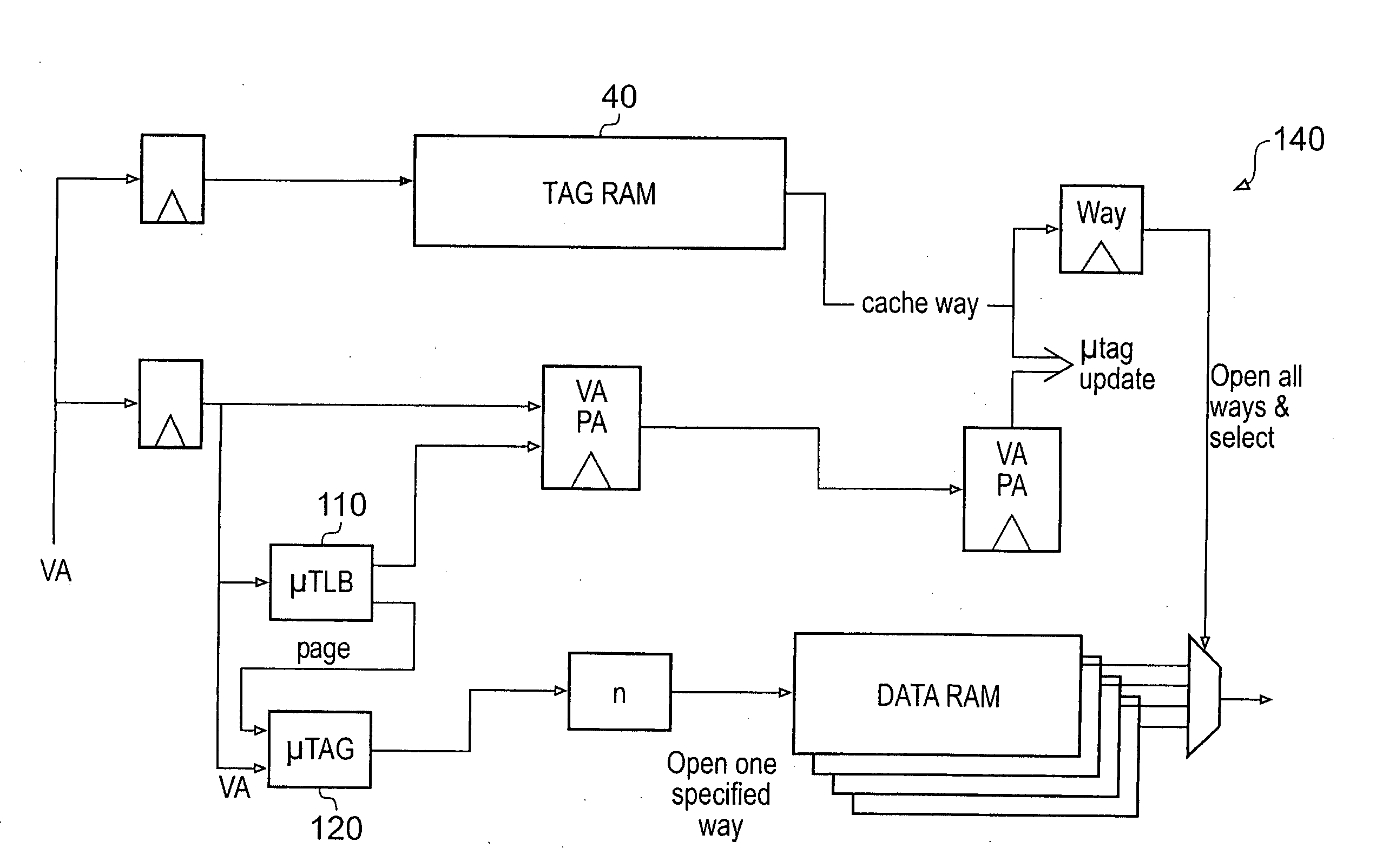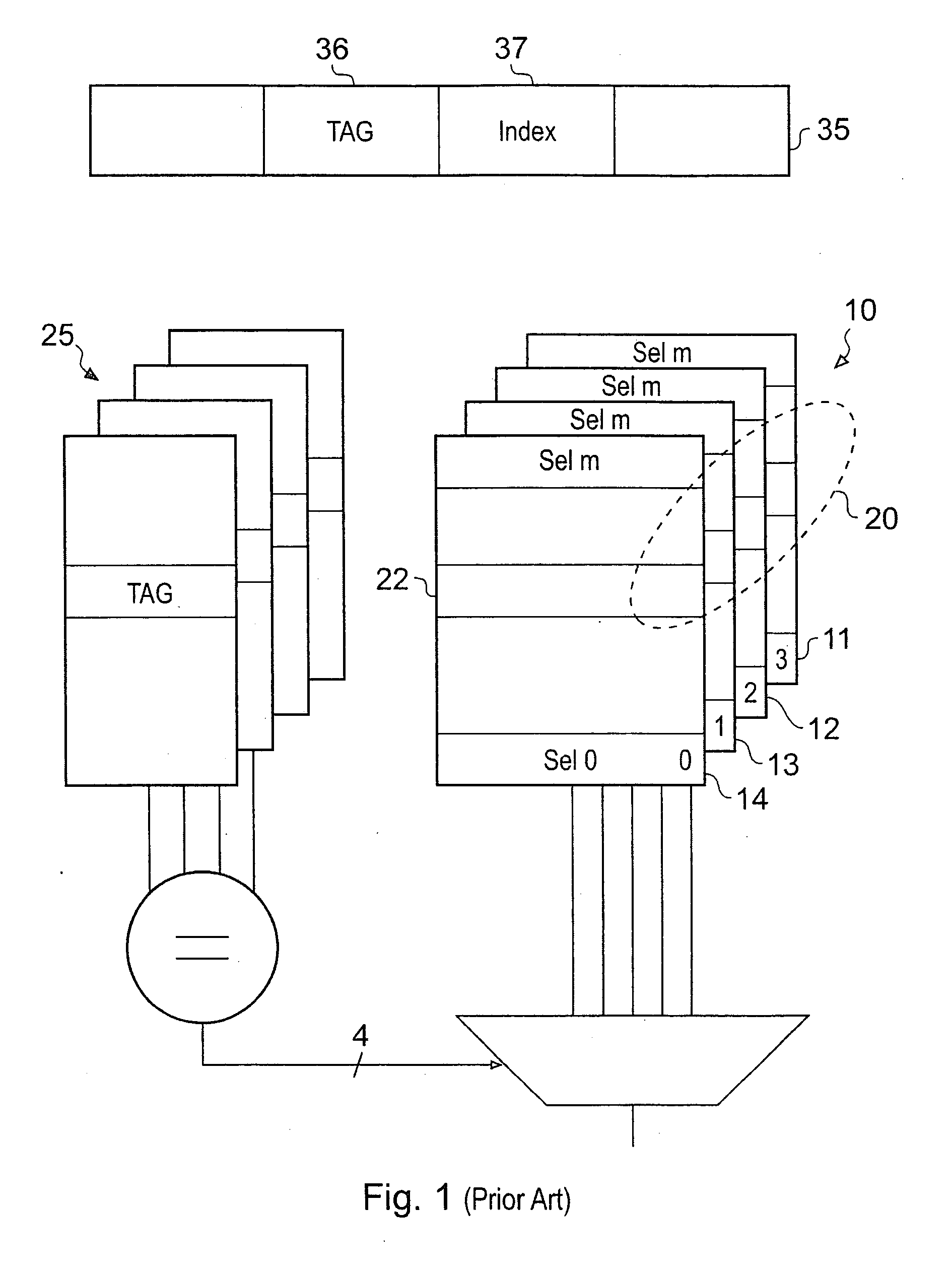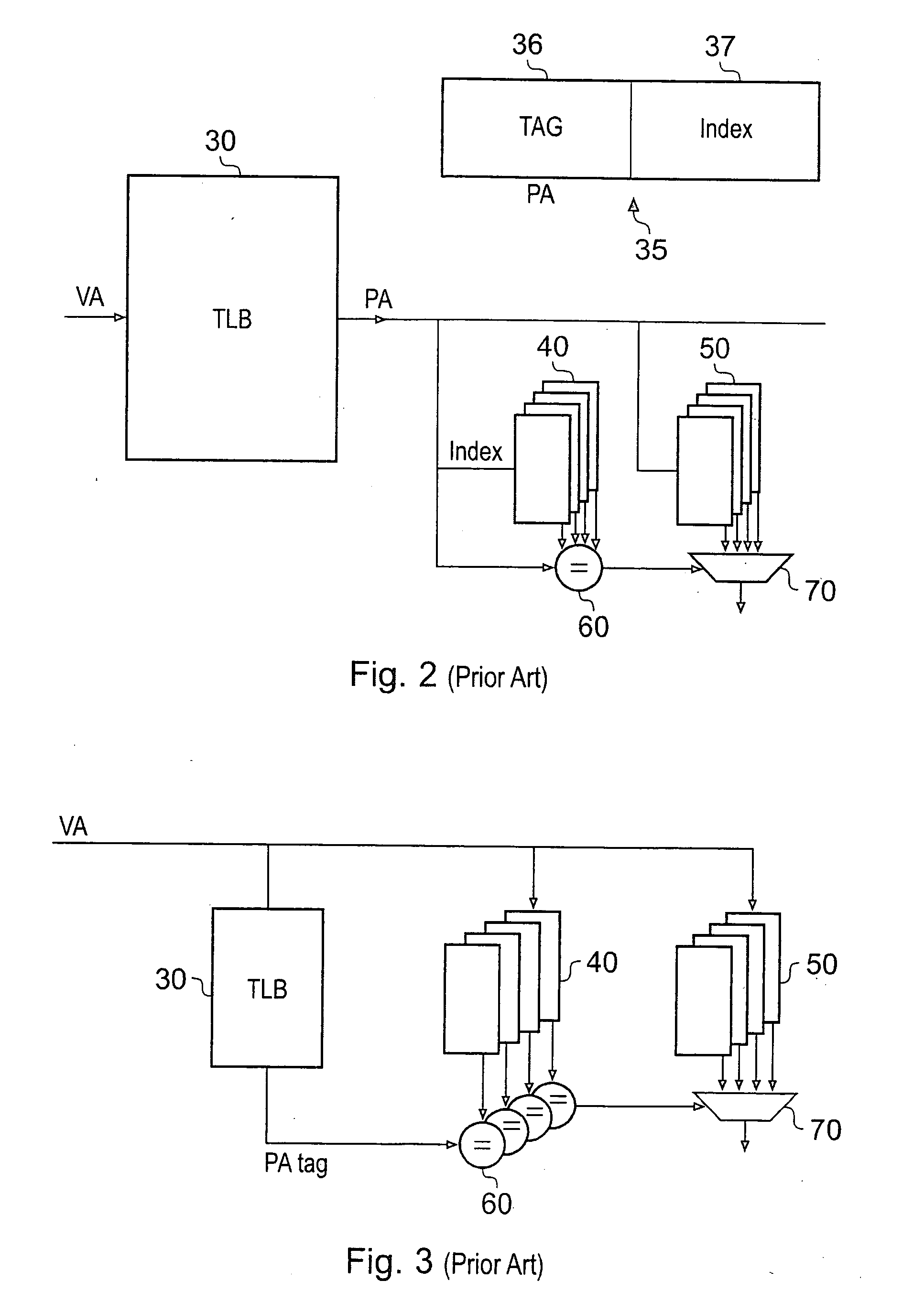Cache accessing using muTAGs
- Summary
- Abstract
- Description
- Claims
- Application Information
AI Technical Summary
Benefits of technology
Problems solved by technology
Method used
Image
Examples
Embodiment Construction
[0049]FIG. 5 shows a μTLB 110 and a μTAG 120 according to an embodiment of the present invention. The μTLB 110 is similar to the μTLB of the prior art except that it has an additional output that outputs a page index. The μTLB 110 comprises mapping of pages of the virtual address space to the physical address space. It comprises eight pages and each is 4 Kbytes in size in this embodiment. Thus, in this embodiment bits 31 to 12 of eight virtual addresses are stored along with bits 31 to 12 of their equivalent eight physical addresses. The table therefore maps 32 Kbytes of memory in eight pages. This 32 Kbytes is a portion of the entire memory that the processor can use and is not the complete memory space. Generally the table is populated for a particular application and thus, this 32 Kbytes is selected to be the portion of the memory space that is most likely to be used by the application and therefore it is unlikely that memory space outside of this will be required by a processor ...
PUM
 Login to View More
Login to View More Abstract
Description
Claims
Application Information
 Login to View More
Login to View More - R&D
- Intellectual Property
- Life Sciences
- Materials
- Tech Scout
- Unparalleled Data Quality
- Higher Quality Content
- 60% Fewer Hallucinations
Browse by: Latest US Patents, China's latest patents, Technical Efficacy Thesaurus, Application Domain, Technology Topic, Popular Technical Reports.
© 2025 PatSnap. All rights reserved.Legal|Privacy policy|Modern Slavery Act Transparency Statement|Sitemap|About US| Contact US: help@patsnap.com



